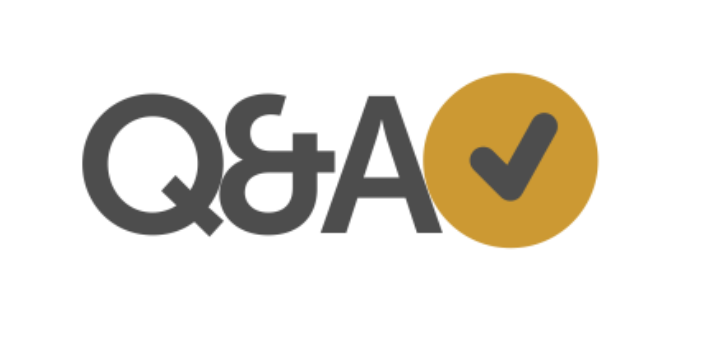A survey should contain questions that are carefully designed to collect important information effectively. These questions are like the foundation of your survey, helping people answer easily while making sure the data you gather is useful and tells you something important.
If you’re carrying out research, asking for feedback, or finding out what people think, the questions you ask matter. That’s why researchers, marketers, and decision-makers need to know how to write good survey questions.
This guide gives you helpful tips on making your survey questions impactful. It talks about different types of questions and how to write them well. Learning how to write good survey questions helps you make surveys that work better and give you more useful insights from the people you’re asking.
Table of contents
What is a Survey Question?
A survey question is a particular question asked to people or a group of people to find out their thoughts, feelings, or preferences about a specific topic.
These questions can come in different forms. Some let people answer freely in their own words, while others give options to choose from, like picking from a list or using a scale. Survey questions are worded and organized carefully to get accurate and helpful answers.
This makes sure the information collected is important and can be used to make decisions or understand things better.
Types of Survey Questions
There are different kinds of survey questions used to collect information in studies. Hence, Choosing the right questions depends on what the study wants to find out and what people prefer.
Here are some common types:
- Multiple Choice Questions (MCQs): People pick one or more answers from a list. These are good for getting structured data.
- Likert Scale Questions: People show how much they agree or disagree with a statement by choosing from options like “Strongly Agree” to “Strongly Disagree.” These help understand opinions.
- Open-Ended Questions: People give detailed answers in their own words. These capture more detailed thoughts but take longer to analyze.
- Ranking Questions: People put items in order based on importance or preference. These show relative choices among options.
- Rating Scale Questions: Similar to Likert scales, people rate items on a scale. This can be about satisfaction or importance.
- Dichotomous Questions: People choose between two options, like “Yes” or “No.” These make it easy to collect simple data.
- Semantic Differential Scale Questions: People rate items based on opposite qualities, like “hot” or “cold.” This shows perceptions and attitudes.
- Matrix Questions: People rate multiple items using the same scale in a grid format. This is useful for collecting data on many related topics.
Find the document below for a clearer view on the examples of survey questions
See Also: 100+ Open-Ended Survey Questions Examples
What Should a Survey Contain?
A good survey should contain several key elements to ensure effectiveness and reliability in collecting data. These elements are as follows:
1. Clear Objectives
Clearly defined research objectives outline what information the survey aims to gather and why it’s important. Understanding the purpose of the survey guides the design of questions and analysis of results.
2. Relevant Questions
Survey questions must be about what we want to learn and help reach the survey’s goals. It is important to skip questions that don’t matter to keep people interested. For example:
A survey should contain questions that are actionable.
By this, actionable survey questions should give insights that can be used to make real changes or improvements. Here’s why it’s important for a survey to have these kinds of questions:
- Help Make Decisions: Actionable survey questions give decision-makers the info they need to make smart choices. This is useful in businesses, schools, healthcare, or government where surveys help gather data to guide actions and plans.
- Find Areas to Improve: Actionable survey questions point out what’s good and what needs work in organizations, products, services, or processes. Surveys collect feedback from people like customers or staff to show areas that need attention or fixing.
- Make Changes: The info from actionable survey questions can push organizations to make changes. For example, if a survey shows lots of complaints about a product, the company might change how it’s made or give extra training to staff.
- Track Progress: Surveys with actionable questions help organizations see how things are going over time. By doing surveys regularly and looking at the results, businesses can see if their plans are working or if things are getting better.
- Use Resources Wisely: Actionable survey data helps decide where to put resources. For instance, if a survey shows that workers in a department aren’t happy, managers might put resources into things like training or team-building to fix the issues.
- Keep Getting Better: Actionable survey questions help organizations keep improving. They use survey info to keep making their plans, products, or services better based on what people need and want.
A survey should contain questions that are complex
While surveys usually aim for simplicity to make questions clear, there are times when having more complex questions is useful. Here’s why:
- Getting Detailed Insights: Complex questions help explore complicated topics or issues in more depth. This allows for a better understanding of different perspectives and insights that simple questions might miss.
- Understanding Complicated Stuff: In areas like psychology, sociology, or public policy, where things are often complex, survey questions need to match that complexity. This helps capture the full range of experiences and viewpoints.
- Making People Think: Complex questions can challenge what people assume and encourage them to think critically. They present scenarios or problems that make people consider different angles before answering.
- Seeing Different Levels of Understanding: Complex questions can show who knows more about a topic. By asking questions that need deeper thought, surveys can figure out how well people understand different subjects.
- Including Everyone’s Views: Complex questions cater to the diverse experiences and opinions of the survey group. They allow for exploring different viewpoints and factors that might affect people’s opinions.
- Helping in Deep Research: In academic or specialized studies, complex questions are necessary to fully explore theories or ideas. They give researchers detailed data to analyze and understand new things better.
- Making Surveys More Accurate: Complex questions might make surveys better at predicting future behaviors or trends. By asking more detailed questions, surveys can get a clearer picture of what might happen next.
3. Logical Flow
Put survey questions in a sensible order, moving from general to specific topics to keep people interested and able to understand.
4. Clarity and Simplicity
Write clear, concise, and easy-to-understand questions using simple language. Avoid jargon, ambiguity, or complex phrasing that may confuse respondents or lead to misinterpretation.
5. Neutral Language
Fairly ask questions to not influence how people answer. Be objective and avoid using words that might lead to biased results.
6. Fair Choices
Provide balanced response options for closed-ended questions to avoid bias and ensure that respondents have appropriate choices to accurately reflect their opinions or experiences.
7. Engagement and Rewards
Find ways to make people interested, like using pictures or offering rewards for taking part. People who are engaged are more likely to give thoughtful and accurate answers.
Related Article: 125+ Random Survey Questions | Types and Template
A Step-by-step Guide on How to Create a Survey
Making a survey involves some important steps to get the information you need. Here’s what to do:
- Know Your Goal: Figure out what you want to find out with your survey and how you’ll use the answers.
- Pick Who to Ask: Decide who you want to answer your survey, like people of a certain age or job.
- Choose a Survey Tool: Find a website or app to make your survey. There are lots of options, from basic ones like Google Forms to fancier ones like SurveyMonkey.
- Plan Your Survey: Sketch out how your survey will work. Figure out what questions you’ll ask and in what order.
- Write Your Questions: Make sure your questions are easy to understand and don’t favor one answer over another. Use different types of questions to get different kinds of info.
- Test Your Survey: Before you send it out, try your survey with a few people to see if it makes sense and if there are any problems.
- Fix Your Survey: Make any changes based on what you found in the test.
- Make It Look Good: Make sure your survey is easy to read and looks nice.
- Decide How to Share It: Think about how you’ll get people to take your survey, like sending emails or posting on social media.
- Send It Out: Once everything’s ready, send your survey to the people you want to answer it. Keep an eye on the responses and make changes if needed.
- Look at the Answers: When you have enough responses, look at what people said. Use charts and graphs to understand the info better.
- Use What You Learned: Use the answers from your survey to make decisions or solve problems. You might also want to tell people what you found out and thank them for answering.
Tips to Create a Good Questionnaire
Here are some tips to help you make effective questions:
- Keep it Simple: Use easy words so people can understand the question easily. Avoid using fancy or complicated language.
- Stick to One Thing: Each question should only ask about one topic. Don’t mix different things, or people might get confused.
- Stay Neutral: Fairly write questions so you don’t influence how people answer. Don’t try to make people choose a certain answer.
- Avoid Asking Too Much: Don’t ask too many things in one question. Keep questions clear and focused on one idea at a time.
- Give Clear Options: If you’re giving people options to choose from, make sure they cover everything and don’t overlap. Make sure people can easily pick the answer that fits best.
- Explain the Scale: If you’re using a scale for people to rate something, make sure they know what each end of the scale means.
- Offer an “Other” Option: Sometimes people might not see an answer that fits them. Giving an “other” option lets them say that none of the provided answers fit.
- Be Fair: Don’t make questions that suggest one answer over another. Keep questions fair and balanced.
- Test the Questions: Try out the questions in a small group before using them in the real survey. This helps catch any problems with the questions.
- Keep it Relevant: Make sure every question helps you get the information you need for your survey. Don’t add extra questions that don’t matter.
FAQs
A survey is a method of collecting data or information from a group of people, typically through a series of questions designed to gather specific insights or opinions on a particular topic.
Surveys are important because they allow organizations, researchers, and businesses to gather valuable feedback, insights, and opinions from a target audience. This information can be used to make informed decisions, improve products or services, or better understand customer needs and preferences.
Effective survey questions should be clear, concise, and relevant to the survey objectives. They should focus on one idea per question, use neutral language to avoid bias, and offer balanced response options.
To increase survey response rates, consider using incentives, keeping surveys short and focused, personalizing invitations, and following up with reminders. It’s also important to communicate the purpose and value of the survey to respondents and ensure that the survey is easy to access and complete.
Conclusion
Creating an effective survey hinges on meticulous question design, ensuring clarity, relevance, and neutrality. Artfully constructing one not only influences the quality of responses but also determines the success of data collection endeavors.
A well-structured questionnaire, featuring a logical flow and diverse question types, helps gather useful information.
If you avoid mistakes and keep people interested, you can create a good questionnaire. It’s important to think about every step, from surveying to looking at the results, to get the best data possible.
References
- Pewresearch.org – Writing Survey Questions
- Surveycto.com – How to Write Survey Questions for Research – With Examples
- Transtutors.com – A survey should contain questions that are





